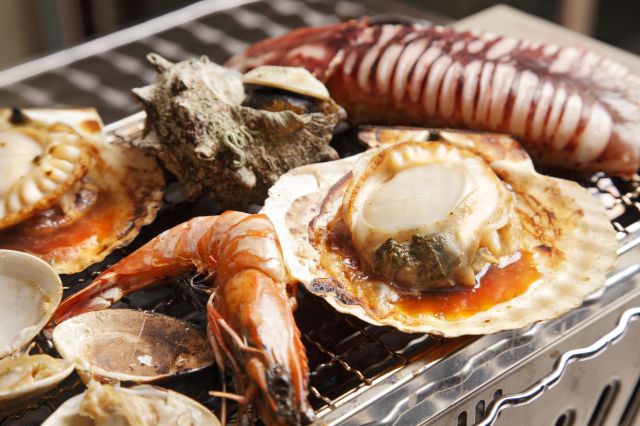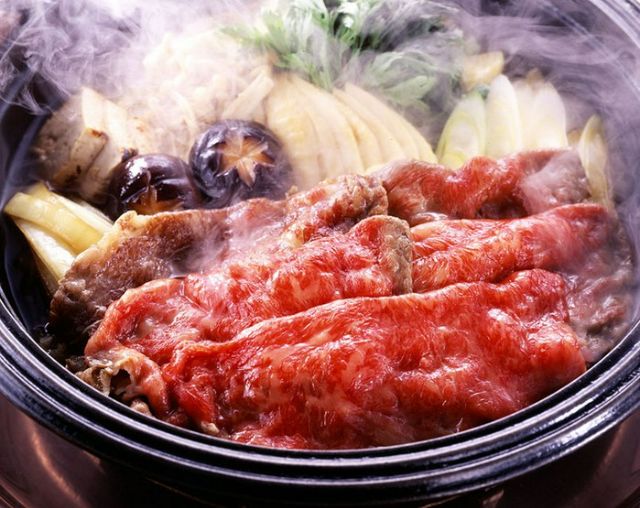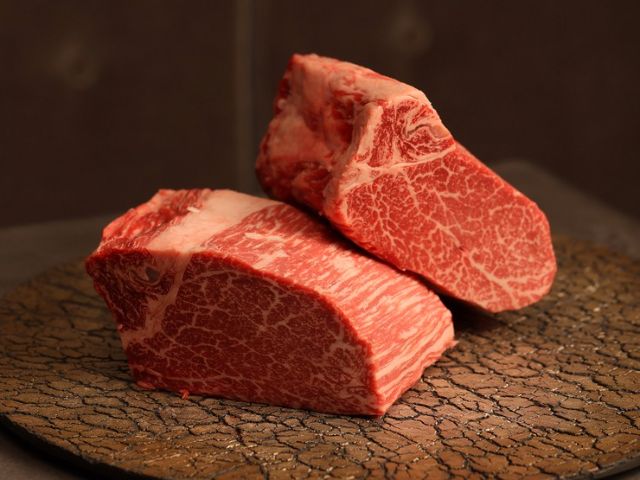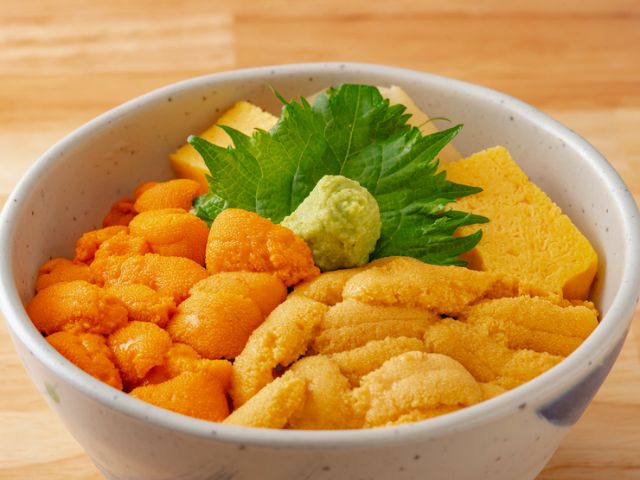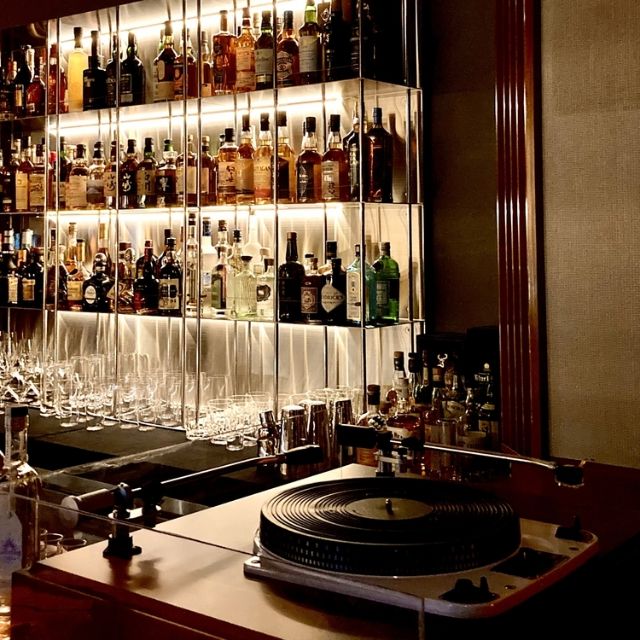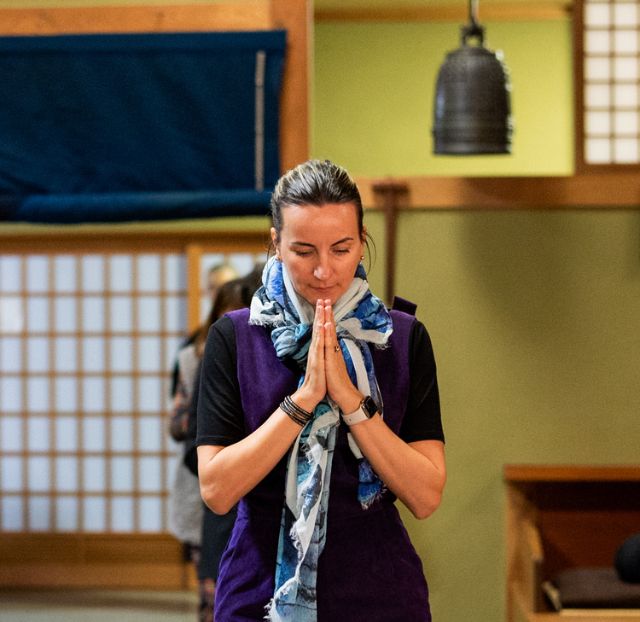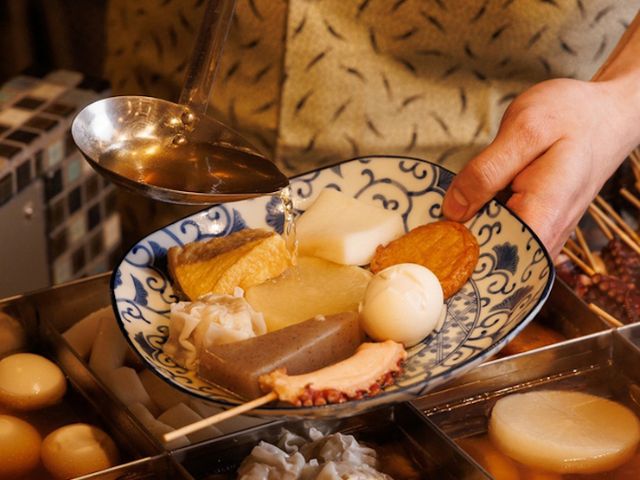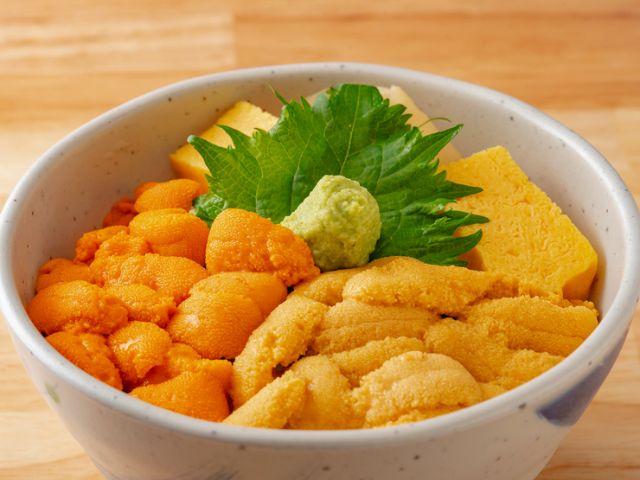Atsukan: Warm Sake Perfect for Winter!
Update-Date: Jan 31, 2024
Author:
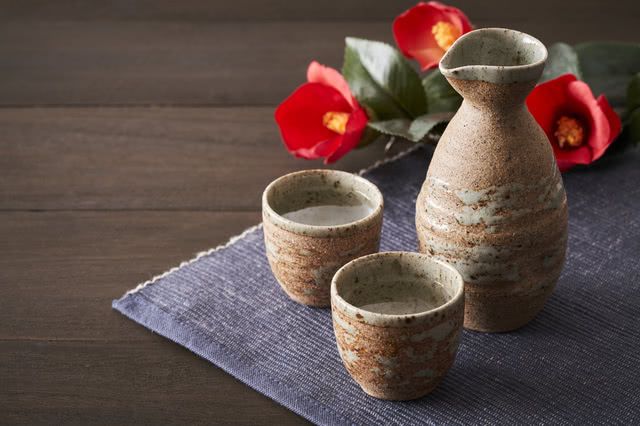
Temperature Changes the Flavor of Sake
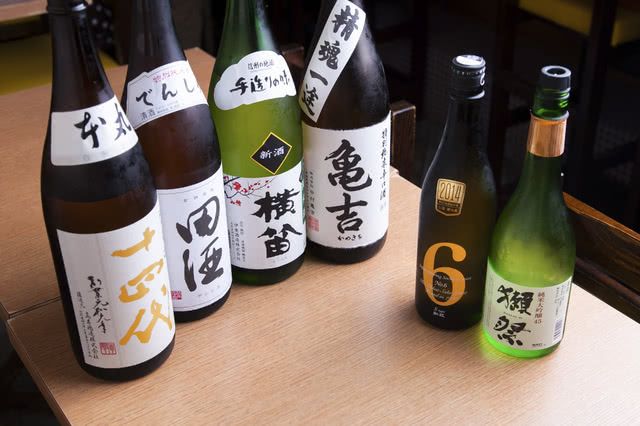
To understand how flavor changes with temperature, keep in mind that chilling tends to suppress the sweetness of sake, resulting in a refreshing and sharp taste with stark aromas, while warming enhances its intrinsic bouquet and body, offering a more mellow and aromatic experience. Also, when sake is warm, its alcohol content becomes more pronounced, creating a rich and full-bodied flavor.
How Does Warm Sake Taste?
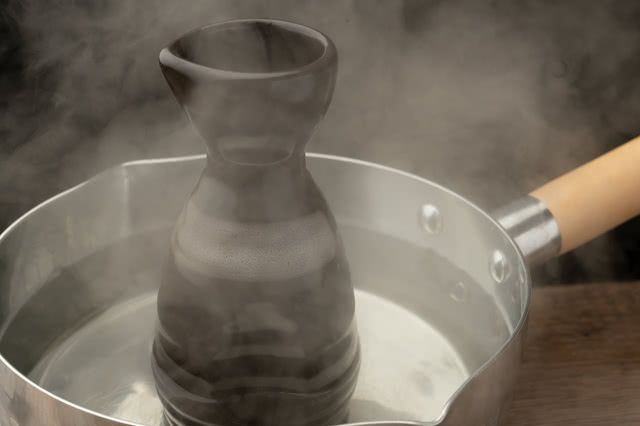
Atsukan is often used as a broad term for warm sake, and each increment of around 5°C is given its own specific name. To prepare atsukan, pour sake into a tokkuri (sake decanter), place it in boiled water, and keep it submerged while using a thermometer to reach your desired temperature. Here are the different types that you can aim for:
■Hinatakan (Sunshine Warm)
The lowest temperature for warm sake is around 30°C. It has a gentle mouthfeel that is said to be like basking in the sun. The acidity and richness are often more pronounced than at room temperature.
■Hitohadakan (Body Temperature Warm)
At approximately 35°C, this sake feels slightly warm when drunk. It highlights the pleasant aromas of rice and koji (malted rice) and yields a more delicate flavor.
■Nurukan (Lukewarm)
At around 40°C, each sip will feel quite warm. The richness and umami are enhanced, making it easier to fully savor.
■Jokan (Warm)
At about 45°C, the warmth is clearly pronounced, giving off a balanced character and sharp aftertaste.
■Atsukan (Hot)
At around 50°C, the sake is now very warm and ideal for cold days.
■Tobikirikan (Piping Hot)
Once you go above 50ºC, the aromas and tastes are very intense and stimulating, which is particularly well-suited to dry sake. Temperatures above 50ºC are also often collectively called atsukan.
By experimenting with temperatures, you can uncover a world of new and surprising sake profiles and preferences. So, before getting stuck in your next bottle, boil up some water and give it a try!
What Food Pairs Well With Atsukan?
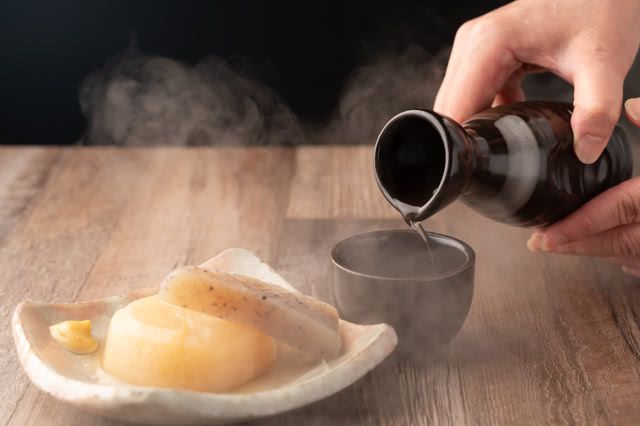
Despite being warm, atsukan still goes well with traditional Japanese sake-pairing dishes like sashimi, simmered fish, boiled vegetables, and stews. During winter, hotpots like sukiyaki, yosenabe (hotpots made with various ingredients), and oden (ingredients stewed in broth) are the ultimate counterparts. Unlike wine, sake of all kinds also pairs well with acidic and citrusy dishes.
With so many different temperatures, you might feel nervous about ordering atsukan at a restaurant. Fret not! Simply asking for atsume (warm) or nurume (lukewarm) is sufficient, and the staff will help you choose the right sake based on your meal and preferences.
Restaurants to Enjoy Great Food With Atsukan Sake
Yakiniku & Sake USHIGORO Kan Ebisu Main Branch (Ebisu / Yakiniku)
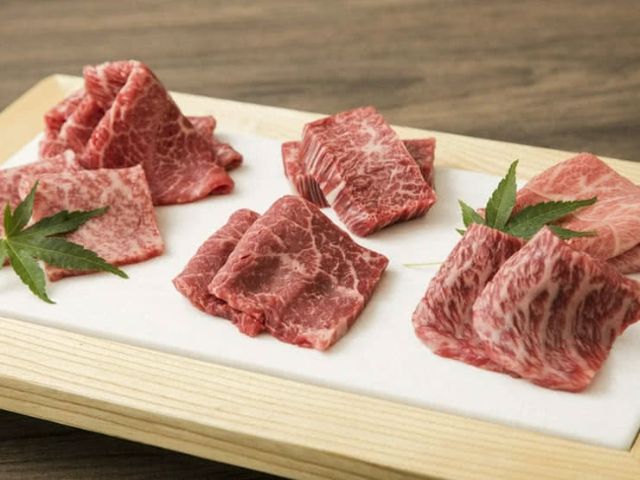
Start with the chef's selected premium cuts with the [Special Assortment of Rare Wagyu Cuts] (3,300 JPY), then order seconds of whatever you enjoy. With all sorts of meats available, even in half sizes, there's plenty to get stuck into. The restaurant also serves sake carefully curated by a certified sake sommelier to complement the meat.
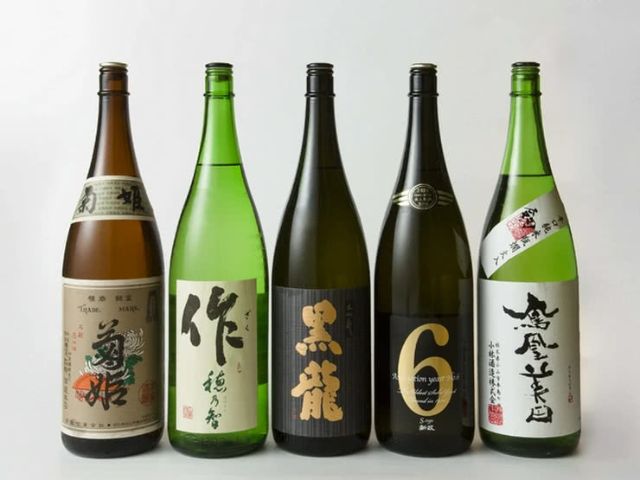
Yakiniku & Sake USHIGORO Kan Ebisu Main Branch
Closed: None
Average price: [Dinner] 6,500 JPY
Access: 2-minute walk from Ebisu Station on JR Line (West Exit) / Hibiya Line (Exit 1 and Exit 3). Go towards atré Ebisu West Wing and it is on the right side
Address: 1F STM Ebisu Bldg., 1-8-1, Ebisuminami, Shibuya-ku, Tokyo Map
More Details Reservation
Sushi Restaurant SAIKA (Otaru / Sushi)
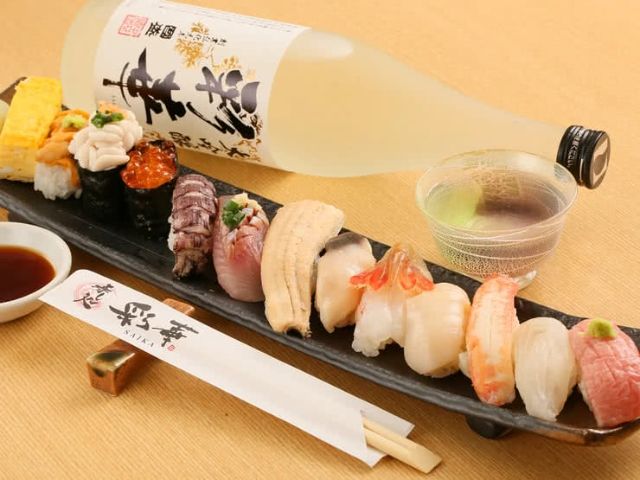
Recommended is the [Hamanasu] (4,500 JPY), a platter of 12 sushi pieces that includes thick and velvety tuna and scallops whose sweetness will linger long after being eaten. The high-quality seafood guarantees peak satisfaction, only made better with well-matched atsukan sake!
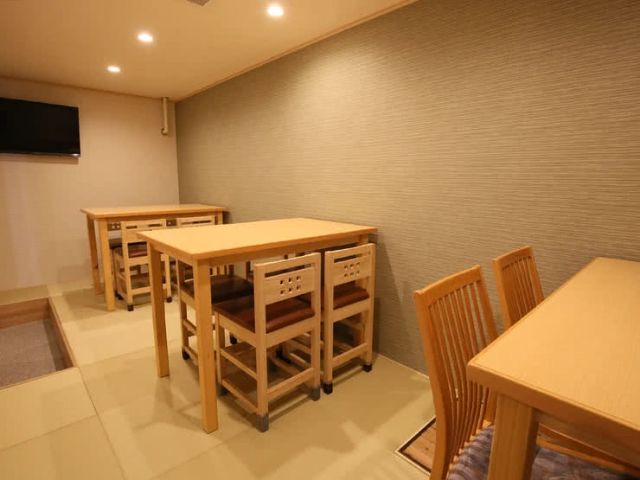
Sushi Restaurant SAIKA
Closed: Thursday
Average price: [Dinner] 5,000 JPY / [Lunch] 2,500 JPY
Access: 5 minutes walk from JR Otaru Station, near the arcade
Address: 2-11-3, Inaho, Otaru-shi, Hokkaido Map
More Details Reservation
Disclaimer: All information is accurate at time of publication.
Thank you for reading our article.
Our goal is to take your culinary journey to the next level by helping you find the best restaurant. With SAVOR JAPAN, you can search and make reservations for
the restaurants found in and around Shibuya and Hokkaido that fill your needs.
Discover more restaurants by area
Keywords
Update-Date: Jan 31, 2024
Author:
Related Articles
New Articles
Categories
Cuisine
- Bars (23)
-
Japanese Cuisine (677)
- Kaiseki (46)
- Nabe (19)
- Okonomiyaki (24)
- Shabu Shabu (37)
- Soba (18)
- Sushi (137)
- Tempura (19)
- Teppanyaki (46)
- Shojin Ryori (3)
- Tonkatsu (11)
- Kushiyaki (10)
- Yakitori (44)
- Sukiyaki (35)
- Japanese Cuisine (342)
- Oyster (2)
- Sashimi/ Seafood (20)
- Unagi (eel) (31)
- Motsu Nabe (offal hotpot) (6)
- Mizutaki (chicken hot pot) (3)
- Oden (8)
- Kaisendon (seafood bowl) (9)
- Udon (2)
- Taverns(Izakaya) Cuisine (124)
- Western Cuisine (42)
- Italian/French Cuisine (95)
- Yakiniku/Steak (225)
- Chinese Cuisine (26)
- Ramen (Noodles) Cuisine (25)
- Cafe/Sweets (60)
- Other Asian Cuisine (5)
- Global/International Cuisine (7)
- Alcohol (45)
- Other (11)
Area
- Shikoku (10)
- Kyoto and Osaka (344)
-
Tokyo (458)
- Tokyo (284)
- Ginza (43)
- Roppongi (22)
- Shibuya (26)
- Shinjuku (46)
- Asakusa (20)
- Ebisu (12)
- Tsukiji (10)
- Tokyo Landmarks (4)
- Ueno (23)
- Akihabara (9)
- Ikebukuro (12)
- Jiyugaoka, Denenchofu, Nakameguro (9)
- Shimokitazawa (4)
- Kichijoji (3)
- Tachikawa (1)
- Omotesando, Harajuku, Aoyama (18)
- Akabane (1)
- Kagurazaka (4)
- Akasaka (10)
- Odaiba (1)
- Tsukishima, Harumi, Toyosu (3)
- Near Tokyo (100)
- Okinawa and Ryukyu Islands (58)
- Hokkaido (124)
- Northern Honshu (Tohoku) (31)
- Central Honshu (Chubu) (144)
- Western Honshu (Chugoku) (32)
- Kyushu (92)
Archives
- December 2025(8)
- November 2025(4)
- October 2025(3)
- September 2025(6)
- August 2025(11)
- July 2025(19)
- June 2025(18)
- May 2025(34)
- April 2025(43)
- March 2025(30)
- February 2025(36)
- January 2025(26)
- December 2024(69)
- November 2024(31)
- October 2024(15)
- September 2024(39)
- August 2024(65)
- July 2024(31)
- June 2024(54)
- May 2024(61)
- April 2024(28)
- March 2024(31)
- February 2024(42)
- January 2024(32)
- December 2023(20)
- November 2023(5)
- October 2023(11)
- September 2023(7)
- August 2023(18)
- July 2023(8)
- June 2023(8)
- May 2023(18)
- April 2023(15)
- March 2023(1)
- January 2023(1)
- April 2022(2)
- March 2022(2)
- February 2022(1)
- January 2022(1)
- July 2021(1)
- March 2021(1)
- February 2021(1)
- December 2020(1)
- October 2020(1)
- September 2020(2)
- August 2020(10)
- July 2020(6)
- June 2020(9)
- May 2020(11)
- April 2020(8)
- March 2020(8)
- February 2020(13)
- January 2020(9)
- December 2019(24)
- November 2019(8)
- August 2019(14)
- July 2019(15)
- June 2019(18)
- May 2019(17)
- April 2019(16)
- March 2019(22)
- February 2019(22)
- January 2019(26)
- December 2018(34)
- November 2018(40)
- October 2018(32)
- September 2018(11)
- August 2018(8)
- July 2018(6)
- June 2018(9)
- May 2018(10)
- April 2018(21)
- March 2018(74)
- February 2018(39)
- January 2018(26)
- December 2017(59)
Keywords
- Omakase
- Accessible
- Affordable
- All-You-Can-Eat
- Amazing Scenery
- anime
- Art
- Autumn
- Awards
- Beer Gardens
- Breakfast
- Chef Recommendations
- Cherry Blossoms
- Chinese
- Close To Station
- Condiments
- Counter
- Coupon
- Crab
- Culture
- Dassai
- Dates
- delivery
- Early Summer
- Editor's Recommendation
- English Available
- Event
- Expo
- Fall Leaves
- Family-Friendly
- Famous Restaurant
- Famous Tourist Spot
- Fast Food
- festival
- fireworks
- Flower Farm
- Free Wi-Fi
- French
- Great Location
- Guide
- Hibachi
- hotpot
- How To
- hydrangea
- Hygiene
- Illumination
- Italian
- Izakaya
- Japanese
- Japanese alcohol
- jingisukan
- Kaiseki
- Kappo
- Kushiage
- Kushikatsu
- Kyoto
- Late-Night
- Lunch
- Manners
- matsusakagyu
- Michelin
- mizutaki
- Model Course
- monjayaki
- motsunabe
- Mt.Fuji
- Multilingual Menus
- Nabe
- Narita Airport
- New Year
- Ninja
- Noodle
- Oden
- Okonomiyaki
- omotenashi
- Onsen
- Osaka
- Osaka Station
- Photogenic Site
- pizza
- PR
- Private Room
- Ramen
- ranking
- Recipe
- Regional Cuisine
- Resort
- Rice Bowl Dish (Donburi)
- sacred places
- Sake
- Sakura
- Sashimi
- sea urchin
- Setouchi Area
- Shabu Shabu
- sightseeing
- Signature Dish
- Soba
- Solo Diners Welcomed
- Spicy Food
- Spring
- Steak
- Summer
- Sunflower
- Sushi
- takeout
- Teppanyaki
- Terrace Seating
- Tokyo
- Tokyo Experiences
- Tokyo Skytree
- Tokyo Tower
- unagi
- UNESCO
- Vegan
- Vegetarian
- Wagyu
- What Popular Gourmet Sites Recommend
- Whisky
- Wine Bar
- Winter
- Wisteria
- Workshop
- World Heritage Site
- World Writers
- Yakiniku
- Yoshoku
- Yuba
- Zen
Discover Restaurants By Area
-

Tokyo Area
Japan's largest city, Tokyo, is the center of culinary culture in Japan. Countless Tokyo restaurants serve every kind of food imaginable and the Toyosu fish market keeps restaurants stocked with the nation's finest fish.
-

Near Tokyo
Coastal areas, mountains and valleys surrounding Tokyo are bursting with tourist destinations, such as hot springs and ski slopes, where many unique foods are only available locally.
-

Kyoto and Osaka Area
The cities of Kyoto and Osaka, together with their surrounding areas, have greatly influenced Japan's culinary culture since the 7th Century. The region is renowned for its entertainment, Kobe beef, and wide-ranging traditional dishes.
-

Hokkaido Area
The island of Hokkaido is home to wide-ranging produce of the finest quality, such as rice, meat, vegetables, fish and fruit. Popular dishes from Hokkaido include robatayaki (food slowly roasted on skewers) and Sapporo miso ramen.
-

Northern Honshu (Tohoku)
The northern end of Japan's main island, Honshu, is renowned for its seasonal fruit and vegetables, nation-leading harvest of fish (especially tuna from Ohma), and delicious beef from Yonezawa, Sendai and Yamagata.
-

Central Honshu (Chubu)
Chubu is in the center of Japan's main island, Honshu, and its culinary culture reflects its position between Japan's western and eastern halves. Delicious Hida beef, world-famous Mount Fuji and many acclaimed sake breweries are in Chubu.
-

Western Honshu (Chugoku)
Chugoku, on the southwest of Japan's main island, is rich with diverse produce. Many of its products are praised as Japan's best, including Matsuba crabs from Tottori and oysters from Hiroshima. Its pears and muscats are also top grade.
-

Shikoku
The mild climate of Shikoku is ideal for growing citrus fruit such as sudachi. Shikoku is also famous for Sanuki udon noodles, huge yields of tiger prawn from Ehime Prefecture and the best torafugu (tiger globefish) in the country.
-

Kyushu
Western culture was first introduced to Japan through Kyushu, Japan's third largest island, where the influence of Portuguese and other western cuisine influenced the creation of a colorful culinary tradition.
-

Okinawa and Ryukyu Islands
Okinawa, Japan’s southernmost prefecture, is a treasure trove of distinctive dishes and drinks that have become popular throughout Japan, including Okinawa soba, unique sushi toppings and Awamori distilled liquor.
